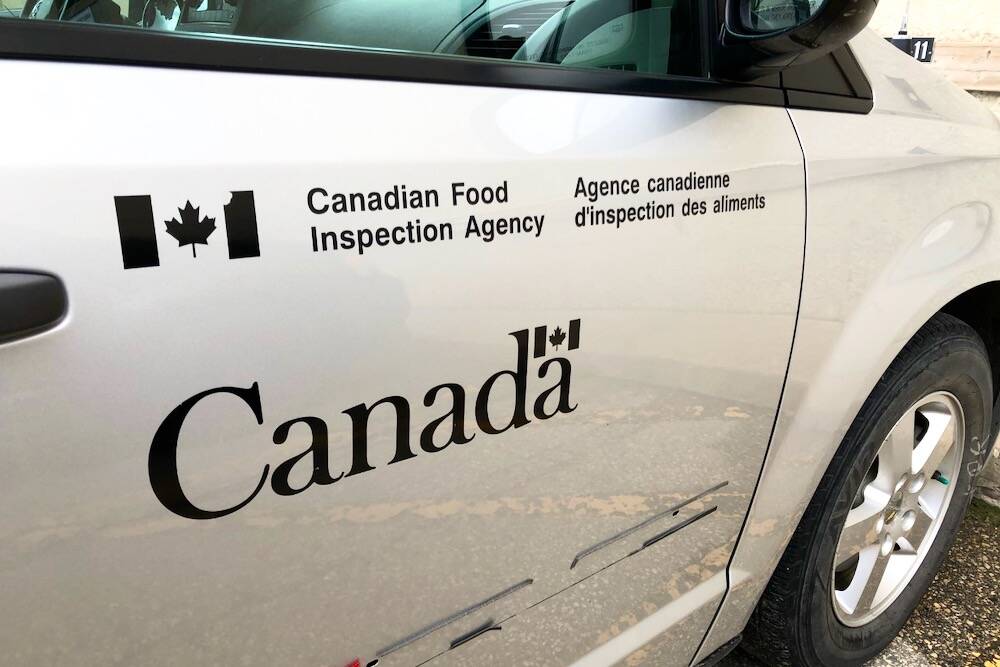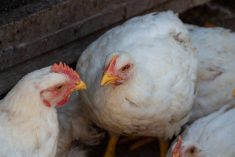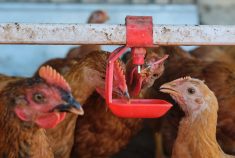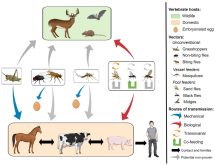Three additional poultry flocks in central Alberta and one in eastern Ontario were confirmed over the weekend to be infected with highly pathogenic avian influenza.
The Canadian Food Inspection Agency said Monday it had confirmed high-path H5N1 avian flu on Friday in a commercial poultry flock in Kneehill County, between Calgary and Red Deer, and on Saturday in a poultry flock in Paintearth County, east of Stettler.
The agency then confirmed high-path H5N1 on Sunday in two poultry flocks: one in central Alberta’s Wetaskiwin County, between Red Deer and Edmonton, and the other in the eastern Ontario township of South Glengarry, which is on the St. Lawrence River just west of the province’s border with Quebec.
Read Also

CFIA adds controls for imports of Spanish feed ingredients after African swine fever outbreak
The Canadian Food Inspection Agency (CFIA) has added Spain to a list of countries subject to feed import controls due to an outbreak of African swine fever in that country.
The three new Alberta outbreaks mark a spread just north and east of the three previous cases announced last week, while the South Glengarry case marks Ontario’s easternmost this year.
Details about the types and numbers of birds infected in the new cases weren’t immediately available Monday. According to the Ontario poultry and egg industries’ Feather Board Command Centre, the South Glengarry case was first reported April 4 in a flock showing 50 per cent mortality.
In H5N1’s current run through North America, the new confirmations bring Canada’s total number of outbreaks in commercial poultry flocks to 16 since February: eight in Ontario, six in Alberta and two in western Nova Scotia.
CFIA on Monday described H5N1 as a “significant threat” for Canadian poultry producers as wild birds make their spring migrations to and through Canada — and “it is anticipated that more detections will be discovered across the country.”
The U.S. Department of Agriculture’s Animal and Plant Health Inspection Service (APHIS) since February has confirmed high-path avian flu in commercial poultry and/or backyard flocks in 26 states, five of which directly border onto Canada.
Such cases have so far been found in Connecticut, Delaware, Illinois, Indiana, Iowa, Kansas, Kentucky, Maine, Maryland, Massachusetts, Michigan, Minnesota, Missouri, Montana, Nebraska, New Hampshire, New York, North Carolina, North Dakota, Ohio, South Dakota, Texas, Virginia, Wisconsin, Wyoming — and, as of Saturday, Colorado, where a non-commercial backyard flock was confirmed infected in Pitkin County, in the Aspen area.
CFIA, in a presentation Monday, emphasized that each infected premises in Canada is considered unique and “no two responses are exactly the same.”
CFIA on March 31 began setting up primary control zones (PCZs) surrounding infected premises in Ontario, in which all movement of domestic birds and poultry products — whether in, out or through — is “strictly controlled” and requires CFIA permits.
As of Saturday, 10 PCZs have been officially set up in southern Ontario along with one in Alberta.
Avian influenza affects several species of food-producing birds as well as pet and wild birds, the agency said, noting there’s no treatment for infected birds. Those with the virus can shed it through their saliva, nasal secretions and feces, and the virus can also spread indirectly through contaminated surfaces.
On top of the outbreaks in commercial flocks, officials in the past few months have also confirmed high-path avian flu in wild and/or non-commercial birds in all four Atlantic provinces, Quebec, Ontario, Saskatchewan and British Columbia. — Glacier FarmMedia Network
















